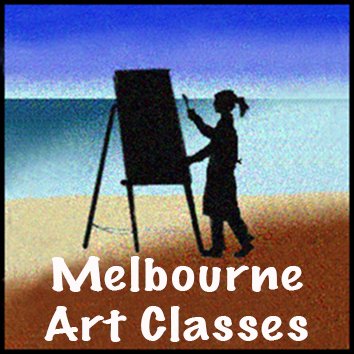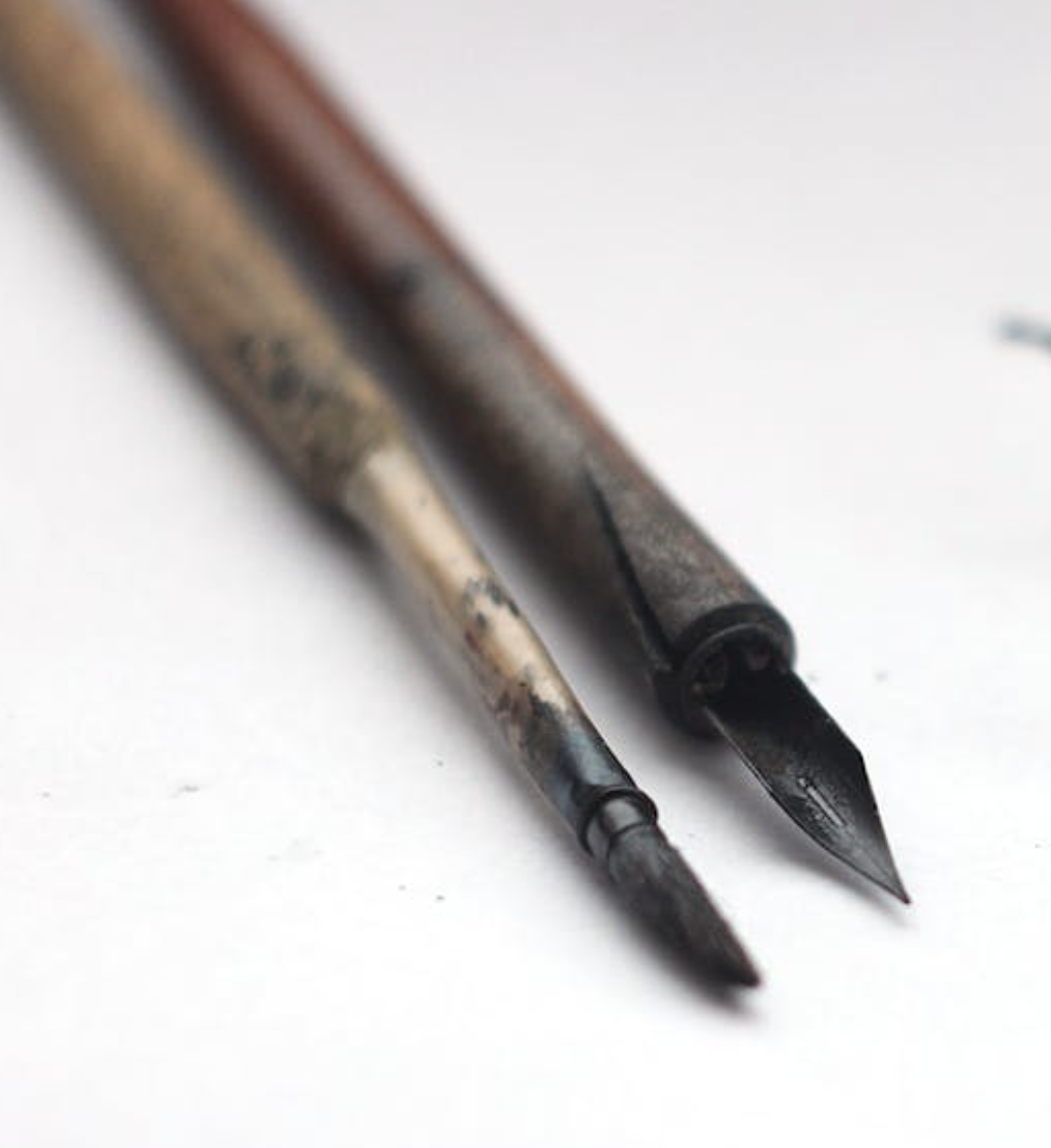This Module is all about expanding your repertoire in drawing media and alternative substrates (different surfaces) to draw on.
BASIC STARTER LIST- EXPERIMENTING WITH DIFFERENT DRAWING MATERIALS (in each section down below, there are several other types of each medium if you want to explore further.)
Basic graphite pencils (at least one H and one B, 8b can go light or heavy, or get a kit with several).
medium black, white and sanguine charcoal pencils
flexible ink nib, soluble fineliner(for ink and wash), waterproof fineliner, ink pot(sumi ink or black Indian ink), a white fineliner pen, (eg. sakura gelly roll, or Pentel, Uniball)
cartridge drawing pad A4 and A3
black or toned paper pad (for the white, sanguine and black charcoal studies)
basic two-hole sharpener
gum/vinyl eraser, kneadable eraser, batter eraser
blending stumps, paper towel
If you want to try adding watercolour with your ink sketches, get a watercolour pad (thickness of 300gsm at least, cold-pressed), Cartridge paper does not go so well wet. Get some tubes of permanent rose, cadmium yellow light, ultramarine blue, burnt umber, maybe some Chinese white. You can make most other colours with the basics.
DRAWING MEDIA
After Graphites, you could experiment with some of the following media, or combinations as well.
CHARCOal
ink nibs and pens
ink & watercolour
MIXED MEDIA - a whole other module
ALTERNATIVE SuBstrates for drawing
Charcoal is a dry medium that can be used in its raw form as sticks or powder, or mixed with gum or wax binder to make it easier to handle. It can create a wide range of tonal marks from intense matt black to very light greys.
It is reasonably easy to remove from a surface with the brush of a hand, although it can leave some staining due to dust getting trapped in the surface texture (worsened if skin oils are involved).
CHARCOAL
Assuming you have finished the Foundation Drawing module exercises in graphites, a great place to start to understand the difference between graphites and charcoals (in practice) is by undertaking hatching, blending etc. with different forms of charcoal, before moving onto actual drawing projects.
DIFFERENCES
While both are carbon based, graphites and charcoal each have unique qualities and uses. This makes them particularly distinctive as tools with charcoal being often used for expressive, dramatic work and preliminary sketches and graphite being used a lot more for detailed, exact work. (of course this is not a hard and fast rule).
MAKING IT
Charcoal is made by burning natural things such as plants, wood or bone, over a long time in a pot or a kiln that has limited airflow. This process leads to the incomplete combustion of the material and the subsequent production of this form of carbon that we know as charcoal.
VINE AND WILLOW CHARCOAL
These sticks tend to be fairly thin and long and are always slightly irregular restricting some of the marks you can make. The different woods used produce different charcoal values with vine charcoal giving a dark grey and willow charcoal creating a richer, deeper black.
Willow charcoal comes in thin, medium, thick and chunky or jumbo.
______________________________________________________________
Vine charcoal is a little bit easier to dust or erase making it a common choice for life drawing, quick sketches or compositions that need a lot of reworking. Vine charcoal also comes in a range of hardness including soft, medium and hard.
POWDERED CHARCOAL
Powdered charcoal is just that…. charcoal in powdered form. It is made by crushing up the dust of willow or vine charcoal or can be bought as a separate product.
You can combine the powder with other charcoal products or use it wet, and with watercolour to create areas of dark rich black in artworks. You will need a suitable surface with tooth and also a fixative as with any charcoal work.
Wet charcoal will dry with the same appearance as dry charcoal, so you can use multiple application techniques on a work to create a nice, unified finish.
COMPRESSED CHARCOAL & CHARCOAL PENCILS
Compressed charcoal and charcoal pencils are now far more commonly used as they break much less easily than vine or willow charcoal and it is easier to erase when desired.
You can also use the side of the blocks to create very broad strokes. Compressed charcoal is made by combining the charcoal powder with a gum binder and pressing it into sticks.
Charcoal pencils are made by putting compressed charcoal (so charcoal powder and a gum or wax binder) into a wooden sleeve ie.a pencil. These charcoal pencils are great for producing finer, crisper drawings(than vine or willow) like you could produce with graphite pencils but with the added benefit of the deepest black matte tonal areas and shades that do not have a metallic shine.(as happens with layers of graphite).
The combination of charcoal and graphite pencils can enhance a drawing by playing both with tone and with the matte and reflective surfaces of each. Some portrait artists will use graphite for the hair, eyes and accessories and then charcoal for delicate soft skin tone and for softer more luxurious fabrics.
The combination of charcoal and graphite pencils can enhance a drawing by playing both with tone and with the matte and reflective surfaces of each. Some portrait artists will use graphite for the hair, eyes and accessories and then charcoal for delicate soft skin tone and for softer more velvety fabrics.
Commonly called ‘charcoals’ in a kit, the white is usually actually calcium carbonate or titanium white, and the Sanguine is made from a chalk or clay containing some form of iron oxide
Ink has been a drawing, writing and painting medium of choice for thousands of years.
Brushes and nibs were most common until the manufacture of ink-based fine-liner pens
Nibs can be made of metal or bamboo, and usually have a split in them allowing for varied lines and marks when you press lightly or more firmly
ink nibs & pens
Fundamentally, all inks are made of pigment or dye that is dissolved or suspended in a vehicle (also called a solvent or carrying medium) that delivers that colour to the paper. Inks can also contain other additives that enhance their performance.
Water soluble ink and pens allow you to create watercolour-like effects by spreading the lines with a wet brush or by drawing on wet/ damp paper. You can easily blend your sketched-in lines and drag out some shadows. This way of working can be very useful when sketching landscapes or figure studies. You can also let the soluble ink dry, wet it again, and lift out some colour. They can be used together with watercolour paint. Look for a soluble ink pen that is lightfast (if you want no fading over time).
Waterproof Ink (using nibs and/or pens) can help you maintain clean lines when using watercolour over your drawing lines and marks. NB.Indian ink is waterproof when completely dry, but if applied thickly, before fully dry it can be soluble and washed around with water on a brush.
TRY SOME EXERCISES IN INK
ALTERNATIVE SuBstrates for drawing
Paper is the quintessential substrate(surface) for drawing of course, however throughout history, artists, graffitists and other dabblers have drawn on many surfaces.
CANVAS
COLLAGED SURFACES
LEATHER, fabric
BAKING PAPER (DELI PAPER)
BOOK PAGES
ROCKS
RECYCLED CARDBOARD
Mixed-media art is one area in which creative use of substrates abounds. Those practising in mixed media also experiment with alternative tools, and combinations of pigments and mediums.
What you create on can be as inspiring or exciting as what you create, and that can take your art in new directions.
Drawing on mixed media layers is just one possible part of this combination of techniques.
For longevity, care would need to be taken in the priming and sealing stages when planning on drawing on non-archival surfaces
SPRAY FIXATIVE (OR MATTE SPRAY VARNISH) is a very handy item to have on hand for layering your drawing into mixed media art, and a liquid varnish should only be applied after an initial layer of spray fixative or varnish, otherwise drawing media can be removed or smudged.
Once a layer of dried paint is down, drawing is easier on many substrates which may otherwise not receive the marks or strokes well.
TRY SOME EXERCISES ON ALTERNATIVE SUBSTRATES











